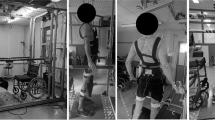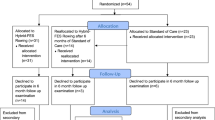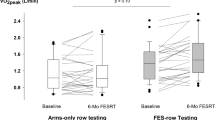Abstract
Neurologically motor complete spinal cord injury (SCI) presents a unique model of bone loss whereby specific regional sites are exposed to a complete loss of voluntary muscle-induced skeletal loading against gravity. This results in a high rate of bone loss, especially in the lower limbs where trabecular bone mass decreases by ~50–60% and cortical bone mass decreases by 25–34% before the rate of bone loss slows. These SCI-induced losses that are likely superimposed on continual age-related bone losses, increase the risk of low-impact fragility fracture. The fracture incidence 20 years post SCI is reported to be 4.6% per year. An intervention that effectively prevents, attenuates, or reverses bone loss is therefore highly desirable. We present a case study of an individual with chronic complete SCI, where bone loss has been attenuated following long-term functional electrical stimulation (FES)-rowing training. In this case study, we characterize the ultradistal tibia and ultradistal radius of the FES-rower with chronic complete SCI using high-resolution-peripheral quantitative computed tomography. These data are compared with a group of FES-untrained individuals with chronic complete SCI and to a normative non-SCI cohort. The evidence suggests, albeit from a single individual, that long-term FES-rowing training can attenuate bone loss secondary to chronic complete SCI. Indeed, key FES-rower’s bone metrics for the ultradistal tibia more closely resemble normative age-matched values, which may have clinical significance since the majority of fragility fractures in chronic SCI occur in the lower extremities.
Similar content being viewed by others
Neurologically motor complete spinal cord injury (SCI) presents a unique model of bone loss whereby specific regional sites are exposed to a complete loss of voluntary muscle-induced skeletal loading against gravity. The initial loss of bone mineral content is estimated to approach 4% per month in trabecular sites, and 2% per month in cortical sites.1 Trabecular bone mass is estimated to decrease by 48% of pre-injury values in the femur, reaching a new slower rate of loss by 3 years and 58% in the tibia by 5 years. Cortical bone mass decreases by 34% of pre-injury values in the femur by 5 years, and 25% in the tibia by 7 years.2 These losses are likely superimposed on continual age-related bone loss.3 SCI-induced bone loss often leads to the development of osteoporosis, which increases the risk of low-impact fragility fracture.4 The fracture incidence 20 years post SCI is reported to be 4.6% per year.5 Thus, even active individuals with complete SCI at age 20 undergoing conventional standard of care have a very high likelihood of sustaining a fragility fracture in their lifetime, markedly affecting quality of life and increasing the risk of mortality.6 An intervention that effectively prevents, attenuates or reverses bone loss is therefore highly desirable.7
One such intervention under investigation is functional electrical stimulation (FES) rowing.8 In the present configuration, FES-rowing is an exercise that combines voluntary upper-limb concurrent with FES-assisted lower-limb exercise involving the quadriceps, hamstrings, tibialis anterior and triceps surae musculature. The training program, which involves three 30-min FES-rowing sessions and four 60-min FES-activated knee extension exercise sessions per week, has been previously described in detail.9 FES-rowing is well tolerated by males and females with complete and incomplete injury between C4 (with a zone of partial preservation that permits a level of elbow flexion) and T12. In addition, there have been no reported medical complications related to FES-rowing training. Furthermore, any increased spasticity is managed by daily FES-training without the need for anti-spasmodic medications.
Gibbons et al.8 recently reported the potential to modulate bone loss in a male, age of 59 years with a T4 complete SCI following a road traffic accident, who is highly trained (>12 years) in FES-rowing. The individual was 14 years post injury, with no history of musculoskeletal complications or medications known to affect bone (calcium, vitamin D or antiresorptive drugs). Although lower limb spasticity has increased since this individual’s injury, daily FES-assisted exercise and passive standing successfully manages the condition without the need for anti-spasmodic medications. In Gibbons et al.8 bilateral trabecular bone density in the proximal tibia was reported using peripheral quantitative computed tomography (Stratec XCT3000, Pforzheim, Germany). The FES-rower’s bone metrics were compared with data from a previous study involving a non-SCI cohort (n=14; mean age of 37 years) and a cohort of chronic SCI who were FES-untrained (n=9; mean age of 32 years; mean of 6.6 years post injury).10 Compared with the non-SCI cohort, the FES-rower had mean proximal tibia bone density in the non-dominant limb that was 0.57 s.d. lower, which is considered within the normal range based on the criterion of no more than 1.0 s.d. lower than the general population mean. The chronic SCI cohort had an average bone density that was 1.66 s.d. lower than the mean for non-SCI individuals. However, key limitations of that study include the lack of age-matched normative data, the relatively small number of subjects in the comparison cohorts and the lack of data on bone microstructure and strength.
The aim of the present study, was to measure bone density and microstructure, and to estimate strength, of the ultradistal radius and ultradistal tibia of a highly trained FES-rower with chronic complete SCI and to compare those measurements to a chronic SCI cohort, who were FES-untrained,11 and normative age- and sex-matched non-SCI cohort (UCSF data including a subset of data previously reported12).
The same individual with chronic complete SCI reported by Gibbons et al. was the FES-rower in this study. During the 24-months before imaging, the FES-rower performed an average of three weekly 30-min rows at 30 strokes per minute, exposing the lower limbs to ~2700 loading cycles per week. The ultradistal radius and ultradistal tibia of the FES-rower was imaged using a high-resolution-peripheral quantitative computed tomography (HR-pQCT) scanner (XtremeCT I, Scanco Medical AG, Bruttisellen, Switzerland) and data were analyzed using established protocols. The standard in-vivo imaging protocol (60 kVP, 900 mA, 100 ms integration time, 126 mm field of view) was used. The non-dominant side (before injury) was scanned. The extremity was immobilized using a carbon fiber cast anchored in the scanner to minimize motion. A single anteroposterior scout radiograph was obtained to allow correct positioning of the tomographic scan volume. A total scan volume of 9.02 mm length (110 slices) was then acquired starting 9.5 mm or 22.5 mm proximal to the joint line in the distal radius and tibia, respectively. Images were reconstructed to a 1536×1536 matrix, allowing for a final nominal, isotropic resolution of 82 μm. To calculate densitometric bone parameters, image attenuation values were calibrated against the attenuation values derived from a standardized hydroxyapatite phantom. Analysis was performed using the standard clinical evaluation protocol in Image Processing Language (IPL v5.08b, Scanco Medical AG), as described in detail previously.13 Cortical parameters were assessed using an extended cortical bone analysis that provides direct calculation of cortical thickness as well as measures of porosity.14,15 Linear micro-finite element analysis was performed to measure apparent biomechanical properties (Scanco FE Software Version 1.12, Scanco Medical AG) using previously described techniques.16–18 Stiffness, apparent modulus, cortical compartment load fraction and failure load estimate were computed for each model.
Individual and group demographics are presented in Table 1. At the tibia, the FES-rower metrics were 0.7–2.4 s.d. better than the chronic SCI cohort means. However, while FES-rower densitometric and trabecular parameters were within ~1 s.d. of normative non-SCI age- and sex-matched control cohort means, cortical porosity and mean pore diameter were higher (+4.6 and +3.7 s.d., respectively) and biomechanical indices lower (−1.2 to −3.5 s.d.), which imply lower bone strength (Table 1). Figure 1 shows representative HR-pQCT ultradistal tibia images of a normative non-SCI age- and sex-matched individual (column A) compared to the FES-rower (column B). The images show increased heterogeneity of structure and density within both trabecular and cortical compartments in the FES-rower. It is important to note that the two individuals are not body-size matched. At the radius, FES-rower densitometric and trabecular metrics were 0.9–2.0 s.d. better than the normative non-SCI cohort means, while cortical and biomechanical indices were within 1 s.d. (Table 1). Figure 2 shows representative HR-pQCT ultradistal radius images of a normative non-SCI age- and sex-matched individual (column A) compared with the FES-rower (column B). The images show similar trabecular and cortical bone uniformity between the non-SCI individual and the FES-rower. No radius data exist for the chronic SCI cohort.
We aimed to characterize the density, microstructure and strength of the ultradistal radius and tibia of a highly trained FES-rower with chronic complete SCI and compare these data to a chronic SCI cohort, who were FES-untrained, and normative non-SCI age- and sex-matched cohort. At the tibia, the majority of trabecular and cortical parameters for the tibia in the FES-rower were within ~1 s.d. of age- and sex-matched non-SCI controls, which suggests bone loss has been mediated in the FES-rower compared to the chronic SCI cohort. However, while habitual FES-rowing biomechanical loading generally appears to have attenuated bone loss in the tibia, bone strength is lower than age- and sex-matched non-SCI controls likely due to the markedly larger percent cortical porosity (+4.6 s.d.) and mean pore diameter (+3.7 s.d.). This suggests that the mechanobiological response that controls cortical porosity in the tibia is in some way different from the response for other bone parameters. At present, the nature of that difference is unknown. Moreover, the high cortical porosity and pore diameter values may explain the markedly lower estimated structural stiffness and failure load in the tibia of the FES-rower. However, the HR-pQCT assessment of a larger number of individuals who have undergone long-term FES-rowing training is required to more fully understand this issue. At the radius, the superior key bone metrics in the FES-rower compared with normative non-SCI controls is consistent with the greater daily bone stimulus for an active manual wheelchair user.
For this single participant age 59 years and over 14 years post injury, a number of the key FES-rower’s bone metrics at the ultradistal tibia site more closely resemble normative non-SCI values. This may have clinical significance, since the vast majority of fragility fractures in chronic SCI occur in the lower extremities.5 Future studies that investigate the effect of long-term FES-rowing training on a large cohort of FES-naïve people with complete SCI are recommended.
References
Wilmet E, Ismail AA, Heilporn A, Welraeds D, Bergmann P . Longitudinal study of the bone mineral content and of soft tissue composition after spinal cord injury. Paraplegia 1995; 33: 674–677.
Eser P, Frotzler A, Zehnder Y, Wick L, Knecht H, Denoth J et al. Relationship between the duration of paralysis and bone structure: a pQCT study of spinal cord injured individuals. Bone 2004; 34: 869–880.
Chan GK, Duque G . Age-related bone loss: old bone, new facts. Gerontology 2002; 48: 62–71.
Bauman WA, Cardozo P . Osteoporosis in individuals with spinal cord injury. PM R 2014; 7: 188–201.
Zehnder Y, Luthi M, Michel D, Knecht H, Perrelet R, Neto I et al. Long-term changes in bone metabolism, bone mineral density, quantitative ultrasound parameters, and fracture incidence after spinal cord injury: a crass-sectional observational study in 100 paraplegic men. Osteoporosis Int 2004; 15: 180–189.
Krause JS, Carter RE, Pickelsimer EE, Wilson D . A prospective study of health and risk of mortality after spinal cord injury. Arch Phys Med Rehabil 2008; 89: 1482–1491.
Chang K-V, Hung C-Y, Chen W-S, Lai M-S, Chien K-L, Han D-S . Effectiveness of bisphosphonate analogues and functional electrical stimulation on attenuating post-injury osteoporosis in spinal cord injury patients- a systematic review and meta-analysis. PLoS ONE 2013; 8: 1–15.
Gibbons RS, McCarthy ID, Gall A, Stock CG, Shippen J, Andrews BJ . Can FES-rowing mediate bone mineral density in SCI: a pilot study. Spinal Cord 2014; 2 (Suppl 3): S4–S5.
Gibbons RS, Shave RE, Gall A, Andrews BJ . FES-rowing in tetraplegia: a preliminary report. Spinal Cord 2014, 1–7.
McCarthy ID, Bloomer Z, Gall A, Keen R, Ferguson-Pell M . Changes in the structure and material properties of the tibia in patients with spinal cord injury. Spinal Cord 2012; 50: 333–337.
Wuermser LA, Beck LA, Lamb JL, Atkinson EJ, Amin S . The effect of low-magnitude whole body vibration on bone density and microstructure in men and women with chronic motor complete paraplegia. J Spinal Cord Med 2015; 38: 178–186.
Burghardt AJ, Kazakia GJ, Ramachandran S, Link TM, Majumdar S . Age- and gender-related differences in the geometric properties and biomechanical significance of intracortical porosity in the distal radius and tibia. J Bone Miner Res 2010; 25: 983–993.
Kazakia GJ, Hyun B, Burghardt AJ, Krug R, Newitt DC, de Papp AE et al. In vivo determination of bone structure in postmenopausal women: a comparison of HR-pQCT and high-field MR imaging. J Bone Miner Res 2008; 23: 463–474.
Buie HR, Campbell GM, Klinck RJ, MacNeil JA, Boyd SK . Automatic segmentation of cortical and trabecular compartments based on a dual threshold technique for in vivo micro-CT bone analysis. Bone 2007; 41: 505–515.
Burghardt AJ, Buie HR, Laib A, Majumdar S, Boyd SK . Reproducibility of direct quantitative measures of cortical bone microarchitecture of the distal radius and tibia by HR-pQCT. Bone 2010; 47: 519–528.
Müller R, Ruegsegger P . Three-dimensional finite element modelling of non-invasively assessed trabecular bone structures. Med Eng Phys 1995; 17: 126–133.
MacNeil JA, Boyd SK . Bone strength at the distal radius can be estimated from high-resolution peripheral quantitative computed tomography and the finite element method. Bone 2008; 42: 1203–1213.
Mueller TL, Christen D, Sandercott S, Boyd SK, van Rietbergen B, Eckstein F et al. Computational finite element bone mechanics accurately predicts mechanical competence in the human radius of an elderly population. Bone 2011; 48: 1232–1238.
Acknowledgements
We are grateful to Courtney Pasco for assistance with HR-pQCT image processing and analysis of the FES-rower data. Andrew Burghardt, Ko Chiba, Narihiro Okazaki, Melissa Guan, Anne Schafer and Sharmila Majumdar were instrumental in acquiring and analyzing a portion of the previously unpublished normative data; these efforts were funded by Merck & Co.
Author information
Authors and Affiliations
Corresponding author
Ethics declarations
Competing interests
The authors declare no conflict of interest.
Rights and permissions
About this article
Cite this article
Gibbons, R., Beaupre, G. & Kazakia, G. FES-rowing attenuates bone loss following spinal cord injury as assessed by HR-pQCT. Spinal Cord Ser Cases 2, 15041 (2016). https://doi.org/10.1038/scsandc.2015.41
Received:
Revised:
Accepted:
Published:
DOI: https://doi.org/10.1038/scsandc.2015.41





